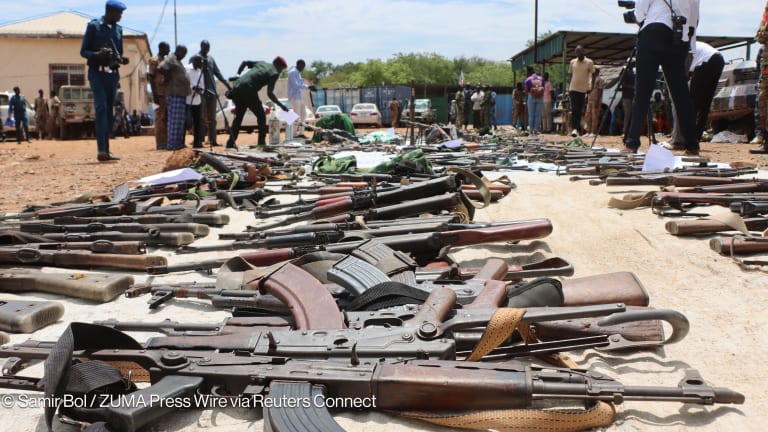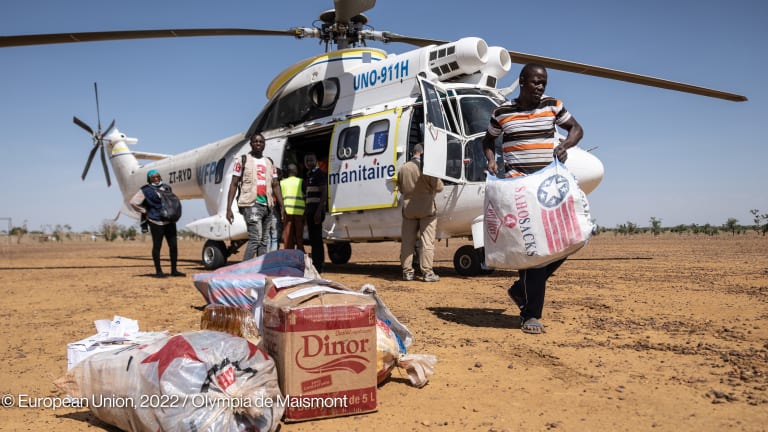
Represented by the United Nations, the global humanitarian community hopes to raise $12.9 billion for 2014 after the appeal made on Monday, although this can still increase following the completion in the coming months of individual countries’ strategic response plans.
Syria is set to take about half of the money: $2.28 billion for operations inside the country and $4.26 billion for the regional refugee response plan. The total requirement is $1.34 billion more than the revised appeal in June, which reached $5.2 billion, although this is not surprising given the ongoing crisis in the Arab country that is already stretching the budgets — and capacity — of many U.N. agencies and NGOs.
Next on the list is South Sudan, which hopes to rake in $1.10 billion. The funds will aim to address immediate needs, focus on building communities’ resilience to shocks and stresses, and build local capacity for the purpose of a more robust aid delivery. International aid agencies remain the main providers of basic services in many parts of the country.
Sudan is also expecting to take in more next year, although the allocation for the country is lower compared to South Sudan. This is somewhat surprising, given the difference in the number of targeted people in both countries — the appeal for South Sudan aims to cover a total of 3.1 million, about half the figure for Sudan, 5.9 million people.
Allocations for Haiti and the Central African Republic were also increased for next year, although it remains to be seen whether contributions to both will improve. This year, both countries were among those that received the least or below 50 percent of the required amount. Somalia, meanwhile, which also received only 48 percent of the $1.153 billion needed for 2013, is set to receive a smaller figure of $928 million.
Below is a breakdown of requirements for each crisis for 2013 and 2014, in order of amount of appeal:
Syria regional response plan - $4.26 billion for 6.8 million people (up from $2.98 billion).
Syria humanitarian response plan - $2.28 billion for 9.3 million people (up from $1.4 billion).
South Sudan - $1.10 billion for 3.1 million people (up from $1.072 billion).
Sudan - $995 million for 5.9 million people (up from $985.12 million).
Somalia - $928 million for 2 million people (down from $1.153 billion).
Democratic Republic of Congo - $832M million for 4.77 million people (down from $892.64 million).
Yemen - $591 million for 761 million people (down from $704.49 million).
Afghanistan - $406 million for 5 million people (down from $474.43 million).
occupied Palestinian territories (Gaza Strip, Area C of the West Bank, and East Jerusalem) - $390 million for 1.9M million people (down from $400.84 million).
Central African Republic - $247 million for 2 million people (up from $195.14 million).
Haiti - $169 million for 396,000 people (up from $152.34 million).
The appeal for typhoon-hit Philippines is set at $791 million, while those for Myanmar (particularly the conflict-affected states of Rakhine and Kachin) and the Sahel region are still in the works.
Donor contributions have been improving in recent years, although this year’s figures remain relatively low, at only $8 billion or only 60 percent of the required $13.4 billion. It remains to be seen whether the change in the process — to take effect in 2014 — will drive more donor support.
Private donations are expected to up next year, although it would be a surprise if this reaches billions. In 2012 and 2013, private contributions topped $172 million and $384 million, respectively, although the United Nations admits this does not capture all private donations, given the limited published data.
Read more development aid news online, and subscribe to The Development Newswire to receive top international development headlines from the world’s leading donors, news sources and opinion leaders — emailed to you FREE every business day.
See more:








